Spatchcocking, also known as butterflying, is a method of preparing poultry that involves removing the backbone and flattening the bird to cook it more evenly and quickly. Here are the steps to spatchcock a whole chicken.
Table of Contents
Jump to:
Flatten a Whole Chicken Step-by-Step
Learning how to spatchcock a chicken is one of the simplest ways to cut down cooking time while ensuring juicy, evenly cooked meat. As a professionally trained chef, I've used this technique in hotel kitchens, catering, and home cooking to create perfectly roasted or grilled whole chickens in less time.

In this step-by-step guide, you'll get detailed instructions, photos for each stage, and chef-tested tips to make spatchcocking safe, efficient, and beginner-friendly.
1. Before Starting
- Inspect the chicken: Place it breast-side down on the board. Ensure it is fully thawed and remove any giblets or innards from the cavity.
- Prepare your workspace: Use a stable, sanitized cutting board and have your tools ready. Wash your hands thoroughly and consider wearing food-safe gloves for extra safety.
2. Remove the Backbone
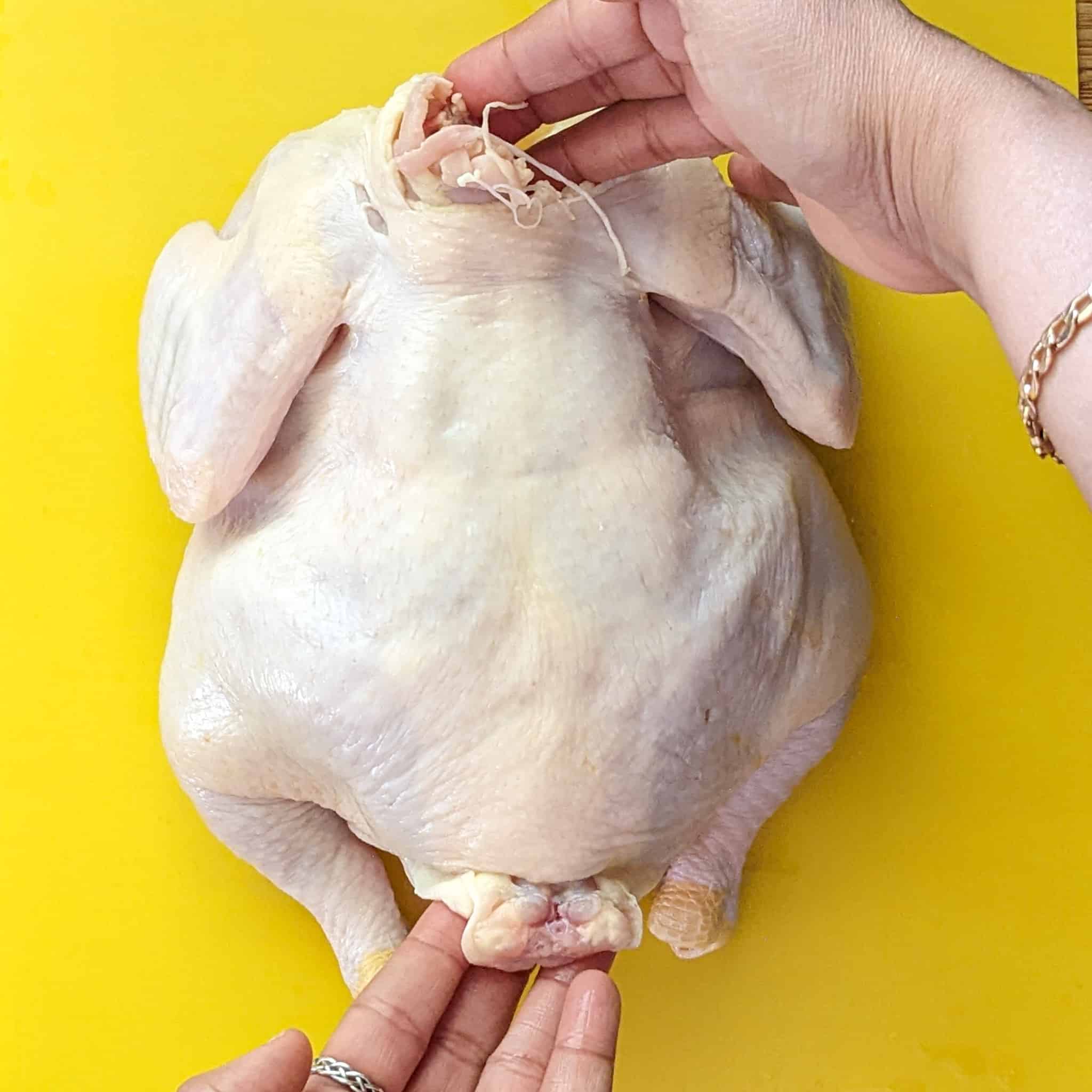
Locate the neck and tail ends of the chicken. The neck end has a small skin flap, while the tail end is more pointed.
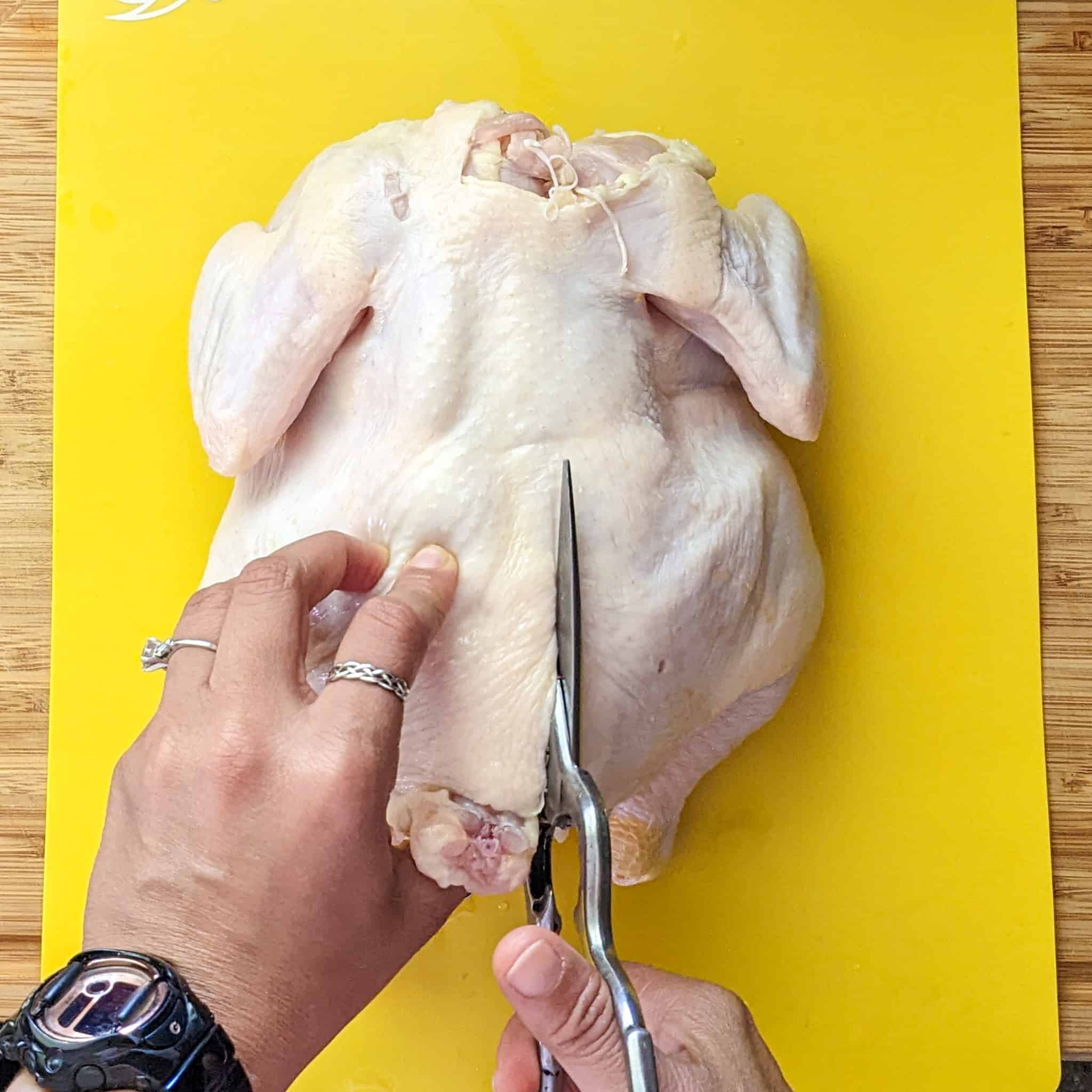
Using sharp kitchen shears or a chef's knife, cut along one side of the backbone from tail to neck.
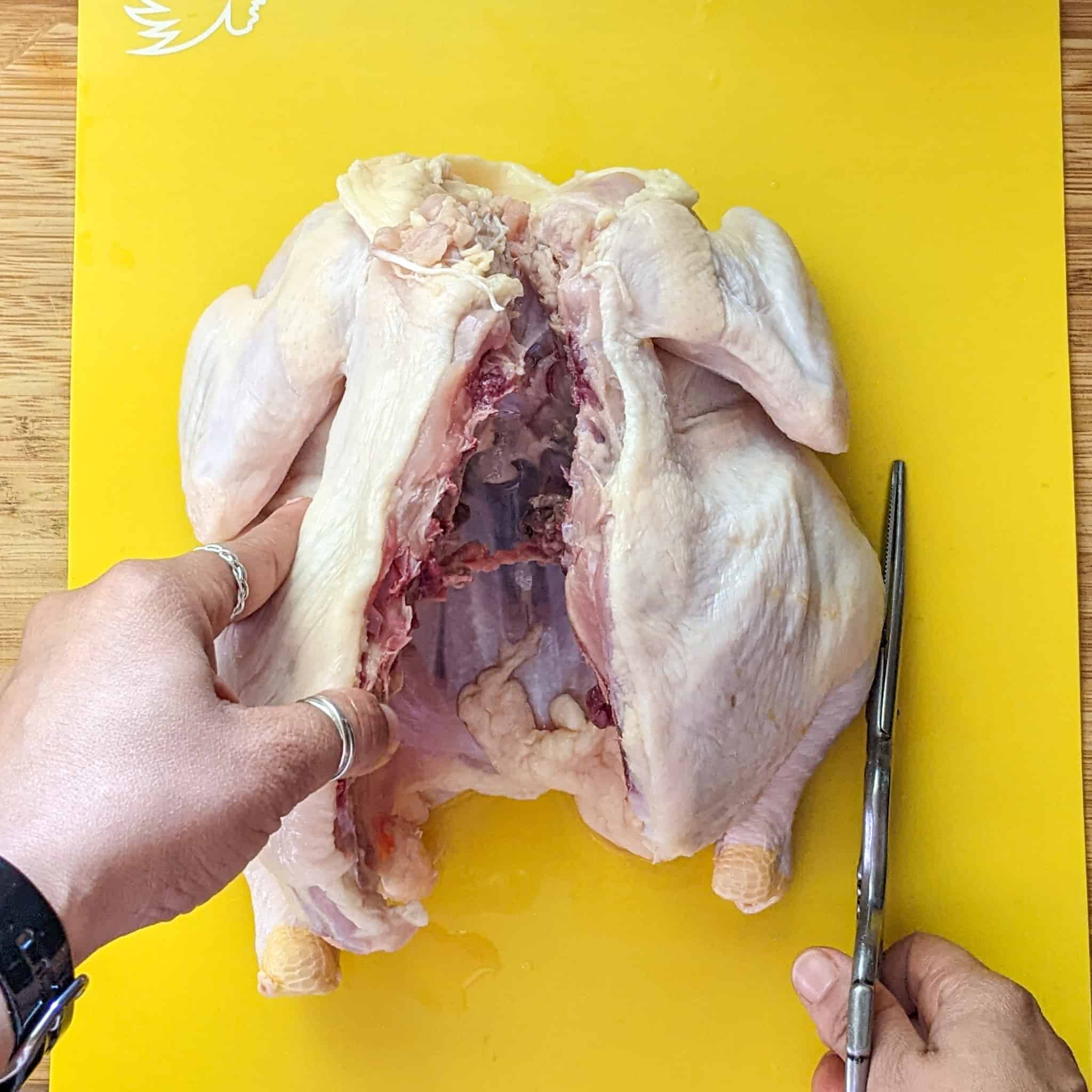
Stay close to the bone to avoid removing meat.
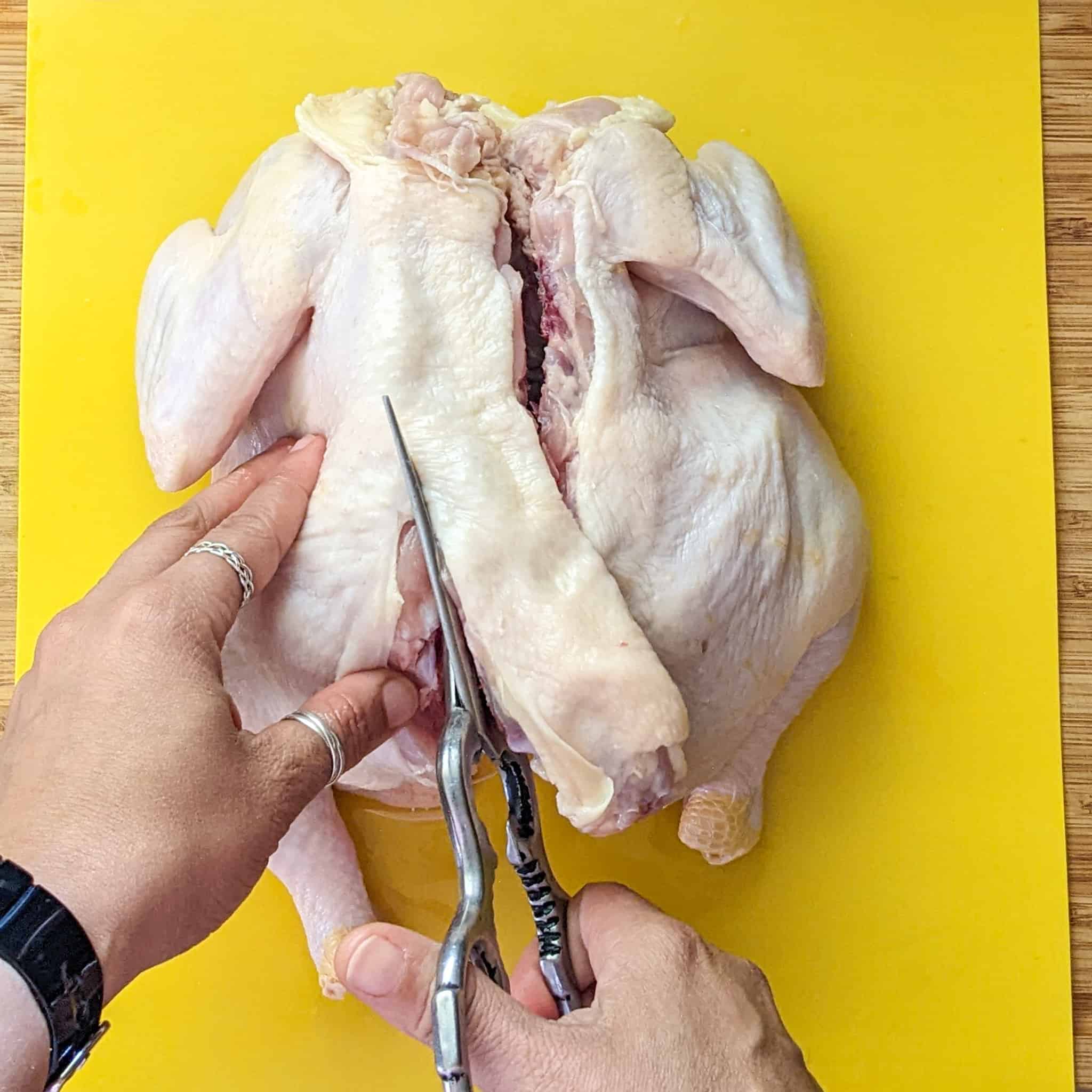
Repeat on the other side to remove the backbone completely.
3. Flatten the Chicken
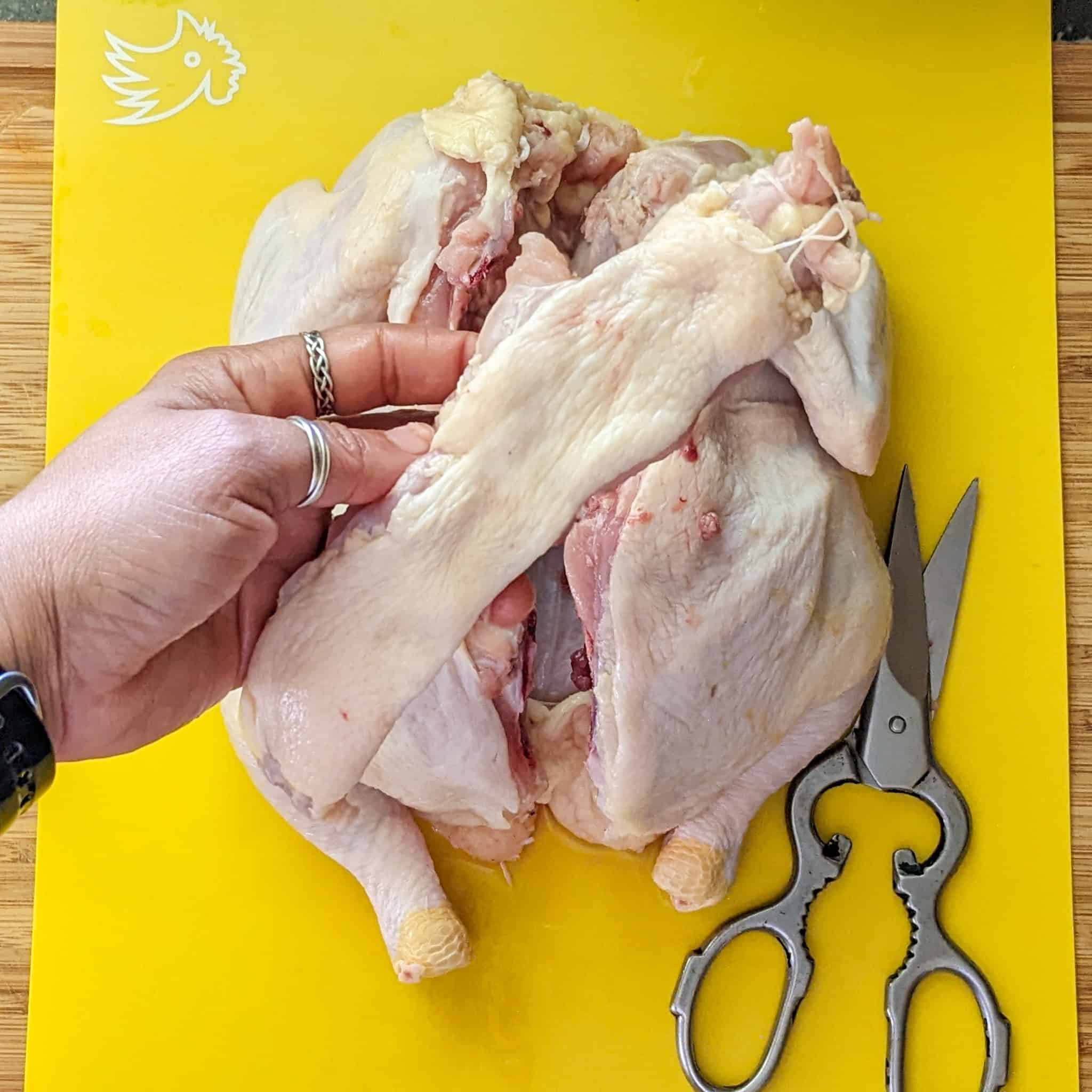
Bonus: Save the backbone for making stock or discard it if not needed.
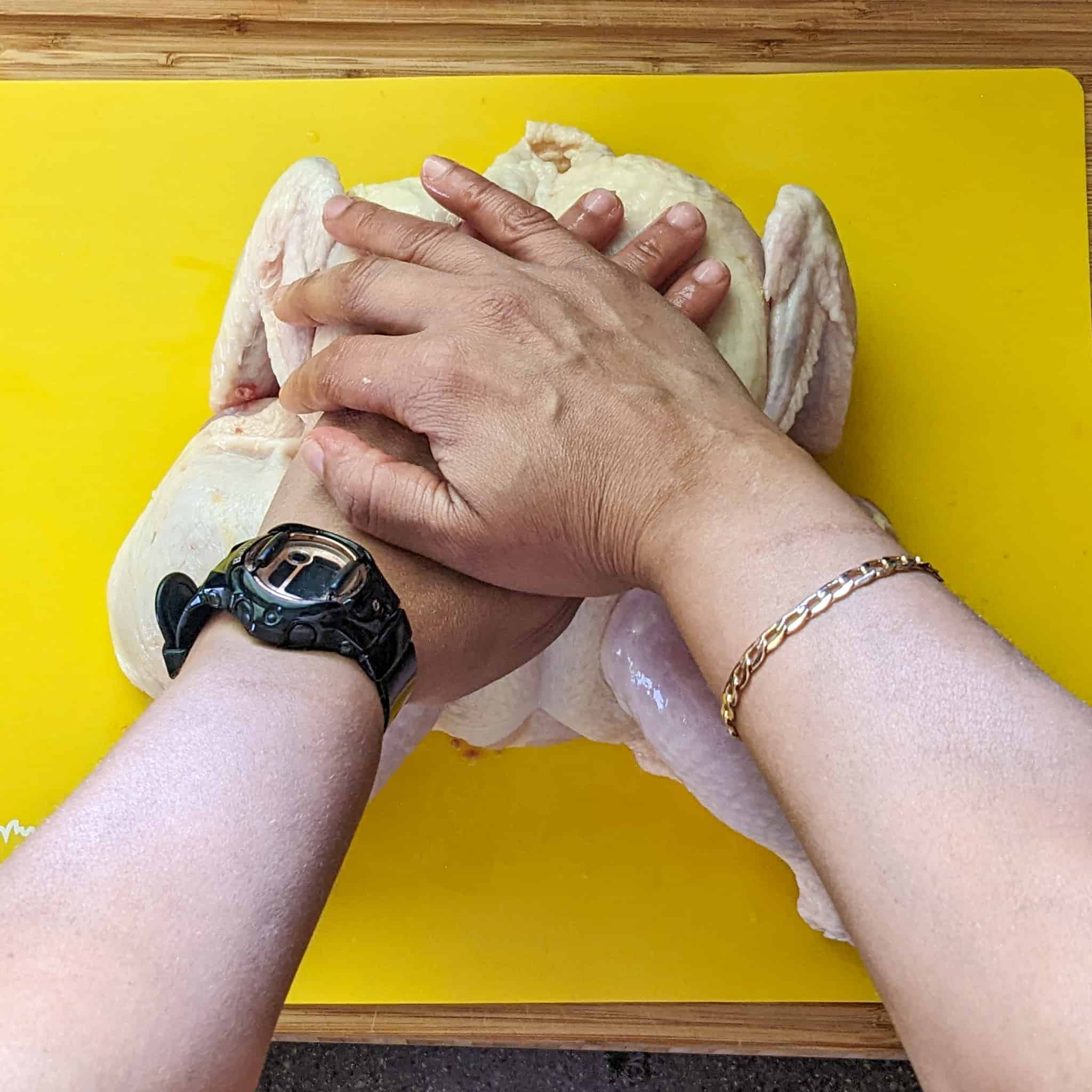
Open the chicken like a book, breast-side up. Place your palms on the breastbone and press down firmly until you hear a slight crack.
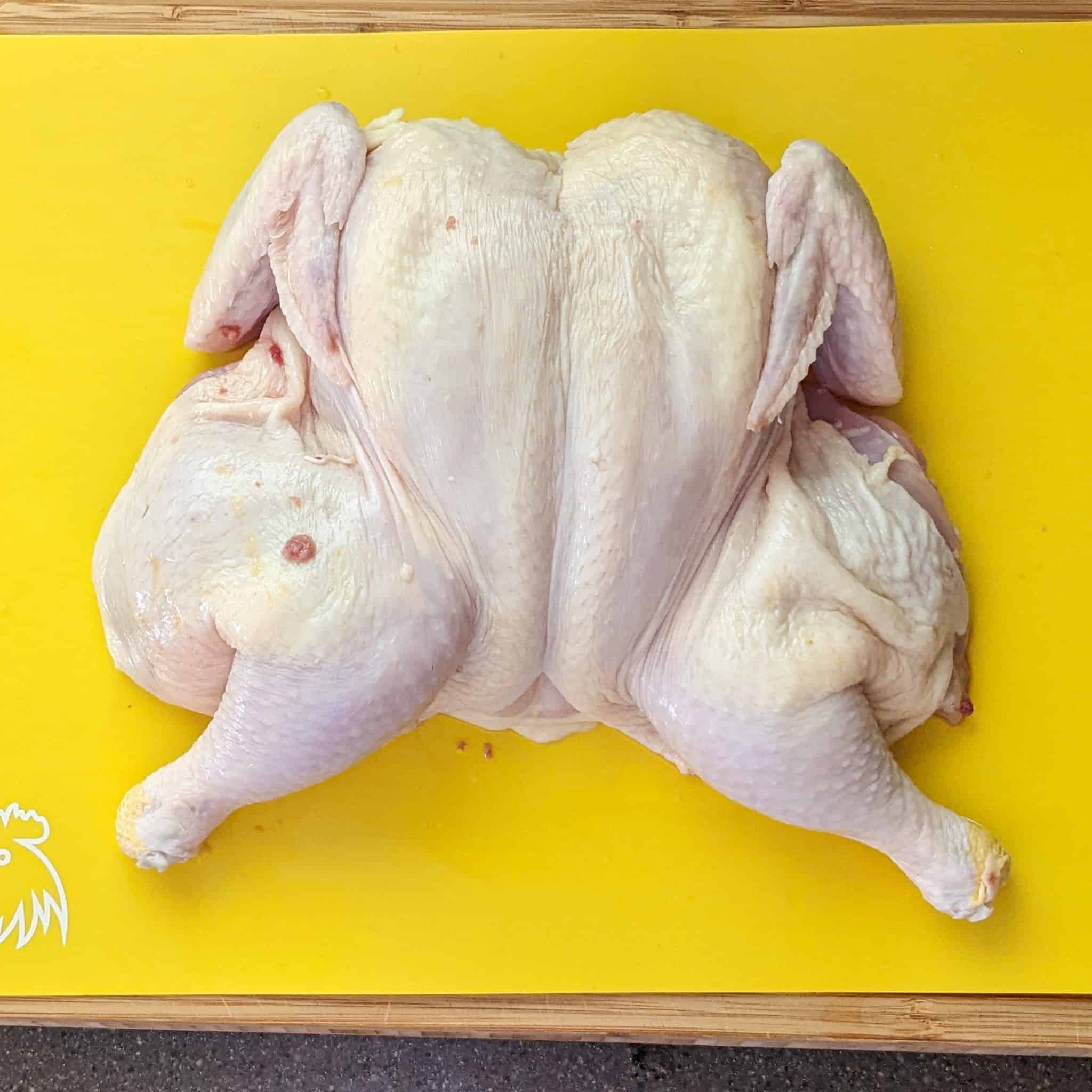
This breaks the bone and flattens the chicken, allowing it to cook evenly and brown beautifully.
Extra Tips
- Trim Any Excess Fat and Skin - If there is any excess fat or skin, you can trim it to your liking. And be careful not to cut into the meat too much.
- Tuck the Wingtips - The wingtips can sometimes burn during roasting, so you can tuck them behind the breast to prevent this. Just fold each wingtip under the breast. This can be a little tricky, but it doesn't have to be perfectly even on both sides.
- Optional: Tie the legs - If you'd like, you can use cooking twine to tie the legs together to help the chicken maintain its flattened shape and cook evenly. Just cross the legs and tie them together securely.

Why Spatchcock a Chicken? This method reduces cooking time by 20-30% compared to roasting a whole bird, ensures even heat distribution, and gives you crisp skin all over. It works for roasting, grilling, smoking, or even pan-searing in a large skillet.
Video Tutorial
Watch my recommended video on this technique: How to Spatchcock a Chicken - YouTube
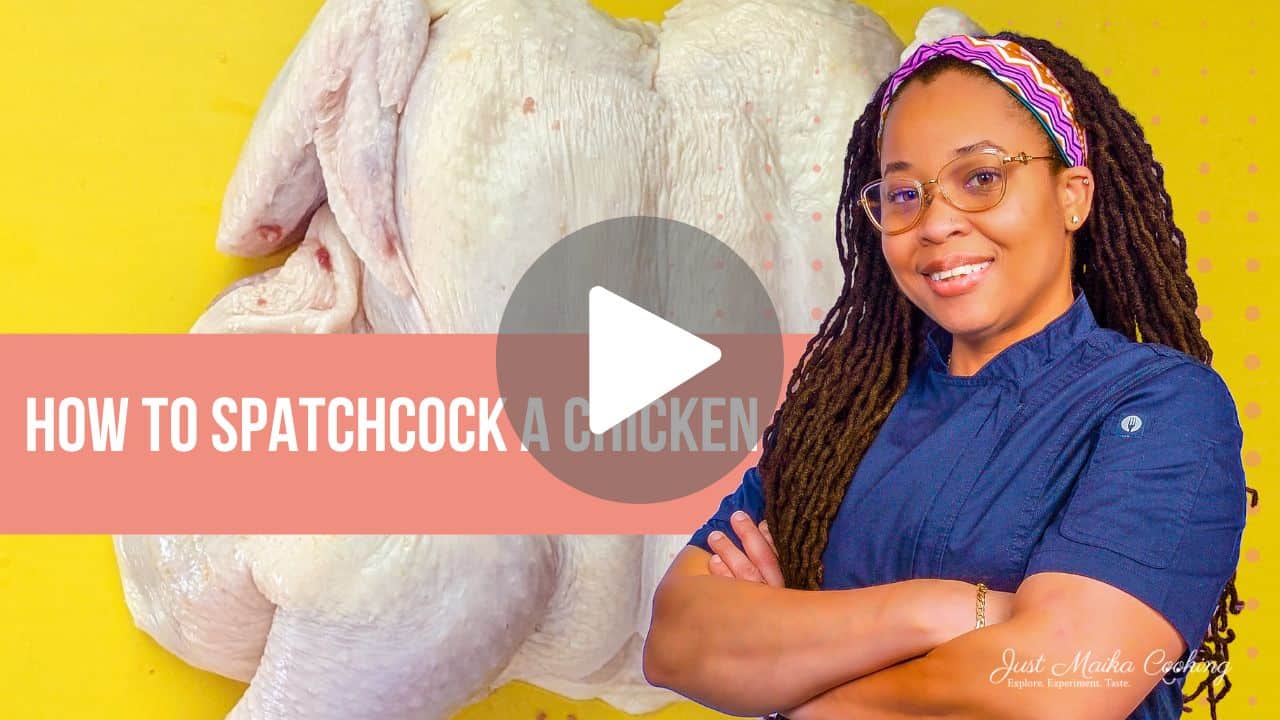
Recommended Reads
- Easy Roasted Curry Spatchcocked Chicken and Vegetables
- 10 Proven Spice‑Storage Hacks (Stop Wasting Flavor)
- Roasted Calabrian Pepper Spatchcocked Chicken
- Zesting
- How to Prevent Cross-Contamination in Your Kitchen
- How to Trim and Slice Collard Greens (Step-by-Step Guide)
Culinary Glossary
This section concisely defines key parts and techniques related to this post to enhance understanding and improve cooking skills.
- Spatchcock: A method of preparing poultry by removing the backbone so the bird can be flattened for quicker, more even cooking.
- Butterflying: Another term for spatchcocking, also used for splitting meat or fish.
- Backbone: The central bone removed during spatchcocking, often saved for stock.
- Breastbone: The bone in the center of the chicken's breast that is pressed to flatten the bird.
Kitchen Must-Haves Reviews
Below you'll find the recommended tools. Find a collection of my reviews of kitchen equipment that I have purchased or recommend. Kitchen Must-Haves - Find other tools I use here.
My Review: The Sunnecko Heavy Duty Kitchen Scissors are the best I've found, closely resembling my trusty pair from over 20 years ago. These ultra-sharp, stainless steel shears feature a micro-serrated blade that effortlessly cuts through chicken, meat, and more. Every part of the scissors serves a purpose: trimming poultry, slicing herbs, cracking nuts, and opening bottles. Durable, dishwasher safe, and reliable, they’re an essential tool for any cook. They’ve saved me countless times, proving that multi-functional kitchen shears are a must-have.
My Review: I’ve used these Fotouzy Cutting Board Mats for a long time, and while they’re flexible, dishwasher-safe, and great for preventing cross-contamination with their color coding, I now prefer solid plastic cutting boards. They’re BPA-free, non-porous, and wide enough to protect my wooden board, especially handy when zesting or transferring ingredients. That said, they don’t stay perfectly steady, even with a damp towel underneath, so I give them a 4 out of 5. But I still use it a lot for quick meat and veggie preps and place them right in the dishwasher.
5 Cooking Tips
Cook's Notebook is your Cooking Tips Resource Guide. Become a better home cook with tips to help you cook more efficiently.
- Pat the chicken dry before seasoning to help the skin crisp.
- Preheat your oven or grill for even heat from the start.
- Season generously under the skin for maximum flavor.
- Roast on a wire rack over a sheet pan to allow air circulation.
- Use a meat thermometer 165°F in the thickest part of the breast ensures food safety.
Frequently Asked Questions
Here, you will find a list of common questions that I have answered. If you have questions, please write them in the comment section below.
At 425°F (218°C), a 4-5 lb chicken takes about 40-50 minutes, depending on size.
Yes, turkey, Cornish hens, and game birds can be prepared this way with adjusted cooking times.
Yes, the backbone removal is what allows the chicken to lay flat for even cooking.
Use a dry rub, marinade, or compound butter. Season under the skin for deeper flavor.
Cooking Tips and Tutorials
Keep exploring more easy tips to become a better homecook.
- Best Food Audiobooks for Chefs & Home Cooks
- Winter Seasonal Produce Guide: What's In Season
- What Is HACCP and Why Every Home Cook Should Care About It
- Holiday Kitchen Safety Tips: How to Cook, Serve, and Store
Food Safety
Get important tips to stay up to date on your food safety skills.
- What is Salmonella? For Home Cooks | Causes and Tips
- How to Marinate Chicken: Tips, Quick Methods & Flavorful Shortcuts
- Listeria and Frozen Dinners: Why Food Safety Matters
- Smart Storage and Kitchen Safety Tools I Can't Live Without
Subscribe to the YouTube Channel
SUBSCRIBE: 👈To my YouTube Channel to Get Notifications of New Videos.


Chef Maika Frederic
Chef and Educator
Haitian-American chef and educator Maika Frederic blends bold flavors with approachable recipes. With a background in both professional kitchens, classrooms, and children therapy as a trained chef, former teacher and technician she brings a thoughtful, inclusive touch to every dish. Through her platform, Just Maika Cooking, she shares diverse meals and practical tips to empower home cooks of all ages and levels.
Have a Comment or Question?
If you have a question or comment about this post, please post it below. You will definitely get a quick response. It also helps our other readers to stay informed. Thanks!




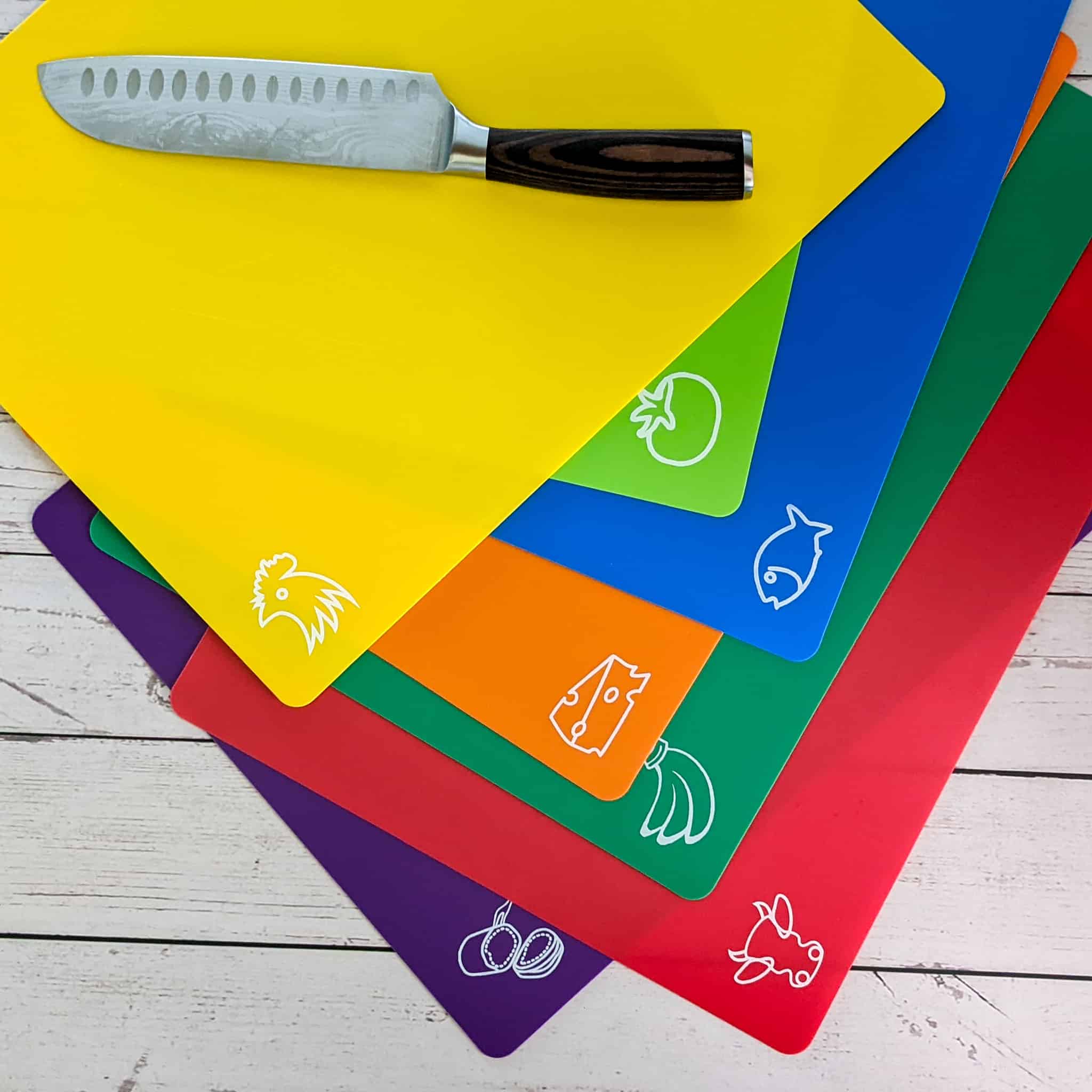
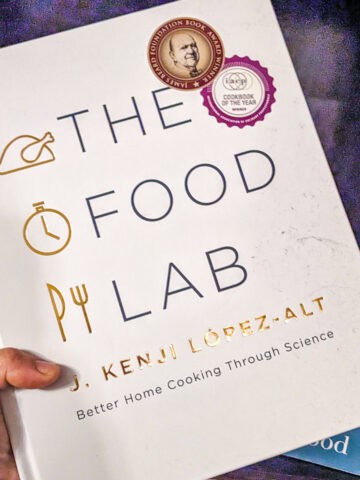
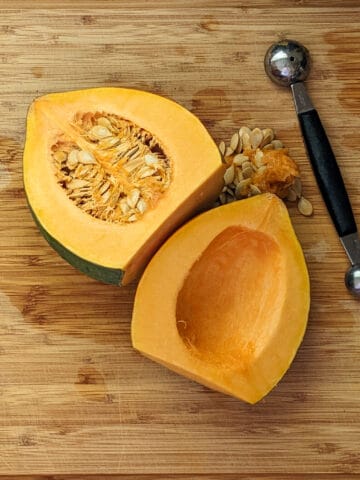
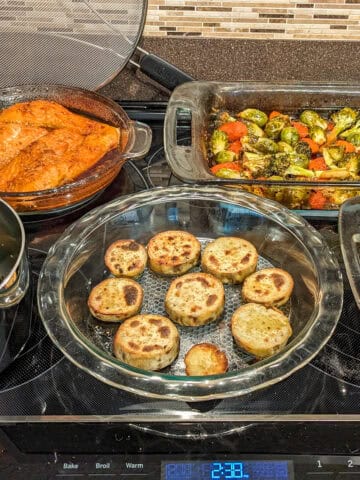
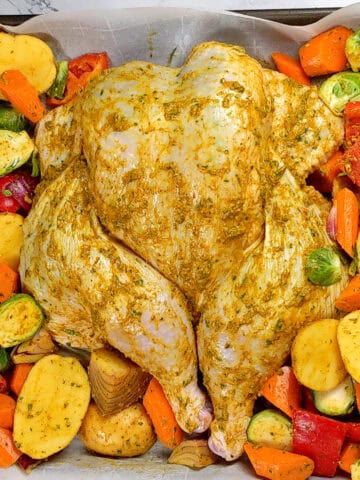
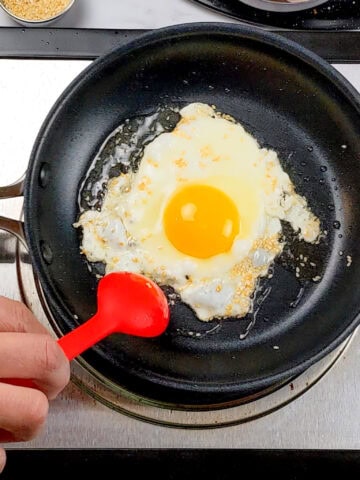
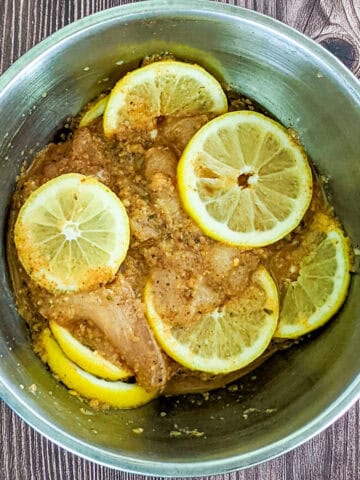
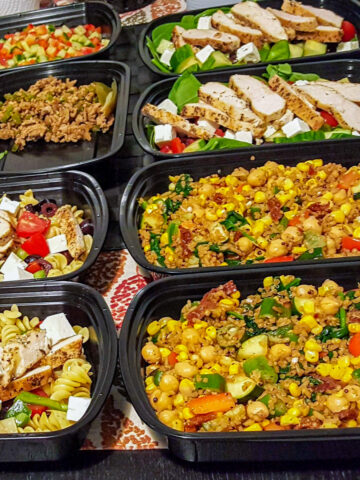
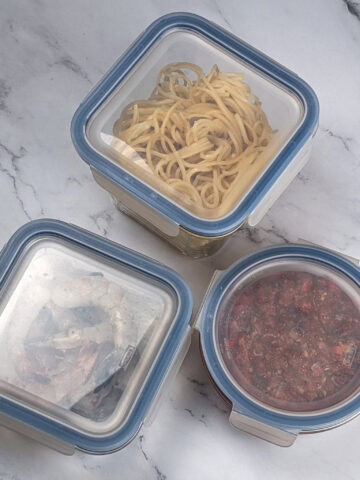
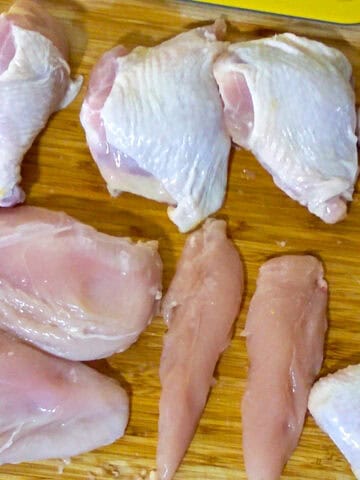
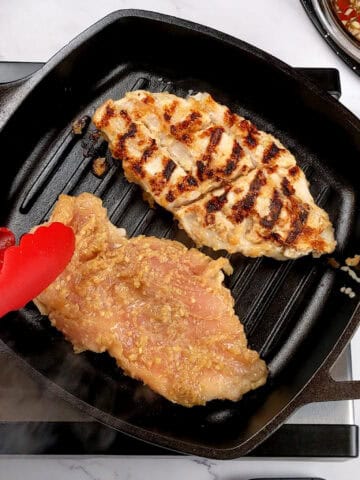
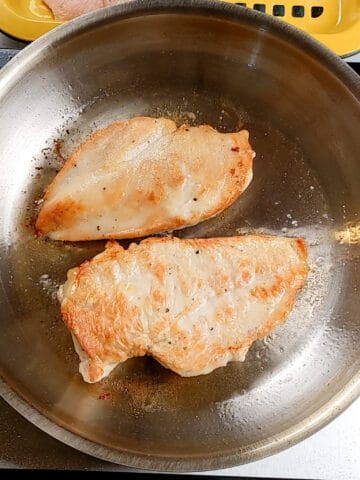
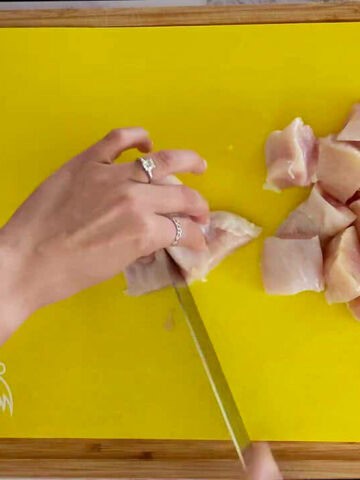
Leave a Reply